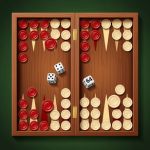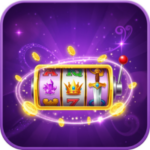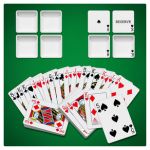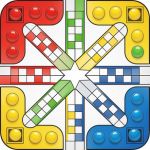Backgammon

GAME INFO
Backgammon is one of the oldest known board games, with a rich history that dates back thousands of years. This classic game combines elements of strategy, luck, and skill, making it a favorite among players of all ages. Played on a distinctive board with 24 triangular points, known as "blots," Backgammon offers a unique blend of competition and social interaction, making it a timeless choice for game enthusiasts.
Game Premise
The premise of Backgammon revolves around two players competing to move their pieces, known as "checkers," around the board and ultimately bear them off before their opponent. Each player starts with 15 checkers placed on their respective home board, and the objective is to move all of one's checkers into their home board and then off the board entirely. The game is played in a race format, where players must navigate their checkers based on the roll of two dice, making strategic decisions along the way.
Backgammon is not just a game of chance; it requires careful planning and tactical thinking. Players must anticipate their opponent's moves, block their progress, and create opportunities to hit their opponent's blots, sending them to the bar and forcing them to re-enter the game. This dynamic interplay of strategy and luck makes Backgammon a captivating experience.
Game Setup
Backgammon is played on a board consisting of 24 narrow triangles, called points, divided into four quadrants. Each player has a home board and an outer board, with the objective of moving all their checkers into their home board. The game setup involves the following steps:
-
Board Arrangement: The board is set up with each player’s checkers arranged in a specific formation. Each player has 15 checkers, which are typically placed as follows: two on the opponent's 24-point, five on the 13-point, three on the 8-point, and five on the 6-point.
-
Dice Rolling: Players take turns rolling two six-sided dice to determine their moves. The player with the higher roll goes first, and the numbers on the dice dictate how many points a player can move their checkers.
-
Starting the Game: Players alternate turns, moving their checkers according to the numbers rolled on the dice. The game continues until one player successfully bears off all their checkers.
Core Gameplay Mechanics
Movement of Checkers
The movement of checkers is a fundamental aspect of Backgammon. Players must adhere to the following rules:
-
Rolling the Dice: On each turn, a player rolls two dice and can move their checkers according to the numbers shown. Each die represents a separate move, and players can choose to move one checker the total of both dice or two separate checkers according to the individual die values.
-
Landing on Points: Players can land on open points (those not occupied by two or more opposing checkers) or points occupied by their own checkers. If a player lands on a point occupied by a single opposing checker (a "blot"), they can hit that checker, sending it to the bar.
-
Re-entering from the Bar: If a player has a checker on the bar, they must re-enter it onto the board before making any other moves. This is done by rolling the dice and moving the checker to the corresponding point in the opponent's home board.
Hitting and Blocking
Hitting and blocking are crucial strategies in Backgammon that can significantly impact the game:
-
Hitting Opponent's Checkers: When a player lands on a point occupied by a single opposing checker, they hit that checker, sending it to the bar. The opponent must then re-enter that checker onto the board, which can disrupt their strategy and slow their progress.
-
Blocking Points: Players can create a blockade by occupying two or more points in a row with their checkers. This prevents the opponent from passing through those points, forcing them to find alternative routes and potentially slowing their progress.
Bearing Off
The ultimate goal in Backgammon is to bear off all of one’s checkers. This process involves:
-
Entering the Home Board: Before bearing off, a player must move all their checkers into their home board. Once all checkers are in the home board, the player can begin the bearing-off process.
-
Removing Checkers: Players can bear off checkers by rolling the exact number needed to move a checker to the bar. For example, if a player rolls a four, they can remove a checker from the fourth point in their home board.
-
Winning the Game: The first player to bear off all their checkers wins the game. If a player bears off all their checkers while their opponent still has checkers on the board, it is considered a "gammon," and the opponent loses double the stakes.
Strategy and Skill
While luck plays a role in Backgammon through the roll of the dice, strategy is equally important. Players must consider various factors, including:
-
Anticipating Opponent Moves: Players should think ahead and anticipate their opponent's moves, adjusting their strategy accordingly to block or hit their checkers.
-
Managing Risk: Players must weigh the risks of leaving blots exposed versus the potential rewards of aggressive play. A well-timed hit can turn the tide of the game, but it also leaves checkers vulnerable.
-
Utilizing the Bar: Players can use the bar to their advantage by hitting their opponent's checkers and forcing them to re-enter, creating opportunities to advance their own checkers.
Visual Design
Backgammon boards come in various designs, from traditional wooden boards to modern digital versions. The visual elements typically include:
-
Board Layout: The board is divided into four quadrants, with each player's home board and outer board clearly marked. The points are often color-coded for easy identification.
-
Checker Design: Checkers are usually round and come in contrasting colors, making it easy to distinguish between players. Digital versions may feature animated checkers that move smoothly across the board.
Audio Design
The audio design of Backgammon enhances the overall experience, featuring:
-
Sound Effects: The sound of dice rolling, checkers moving, and hitting an opponent's checker adds to the excitement of the game.
-
Background Music: Many digital versions of Backgammon include background music that complements the gameplay, creating an engaging atmosphere.
Special Features
Variants of Play
Backgammon has several popular variants that add diversity to the gameplay, including:
-
Nackgammon: A variation that allows players to start with a different setup, adding an extra layer of strategy.
-
Hypergammon: A faster-paced version that uses three checkers instead of 15, making for quicker games.
Online Play
Many modern versions of Backgammon offer online play, allowing players to compete against others from around the world. Features may include:
-
Multiplayer Options: Players can challenge friends or join online tournaments, enhancing the competitive aspect of the game.
-
Leaderboards: Online platforms often feature leaderboards that track player rankings, adding a competitive edge to the experience.
Conclusion
Backgammon is a timeless game that combines strategy, luck, and social interaction, making it a favorite among players of all ages. Its rich history, engaging gameplay mechanics, and the thrill of competition create an enjoyable experience that has stood the test of time. Whether played casually with friends or in a competitive tournament, Backgammon offers endless entertainment and opportunities for skill development. Through its blend of strategy and chance, Backgammon invites players to engage in a classic game that continues to captivate audiences around the world.











